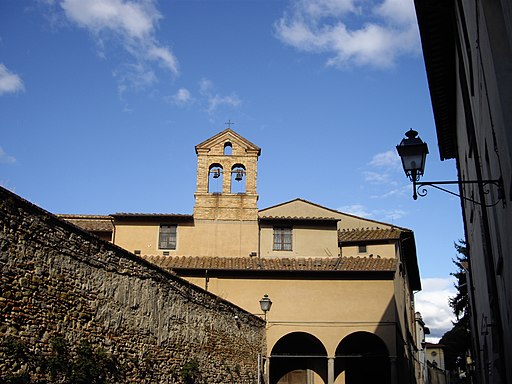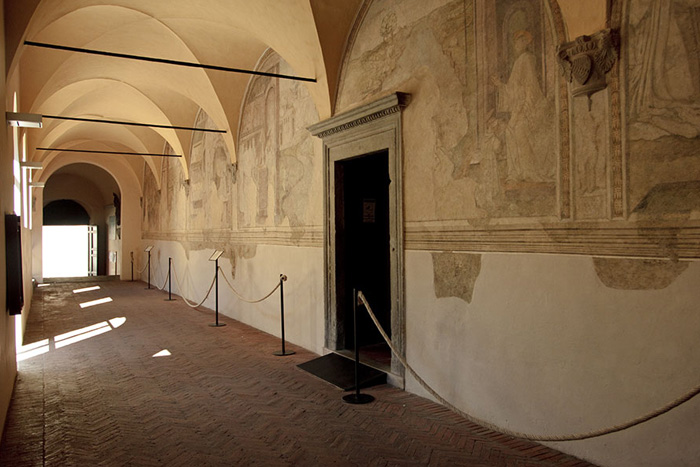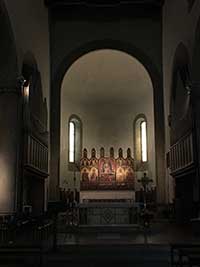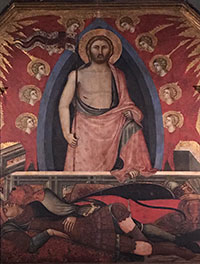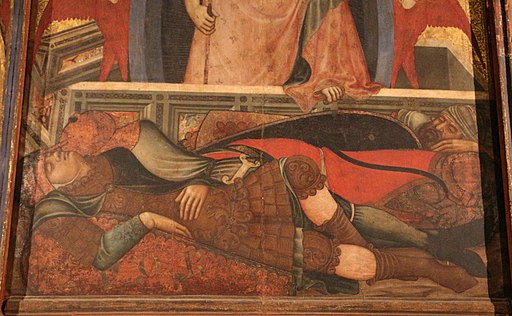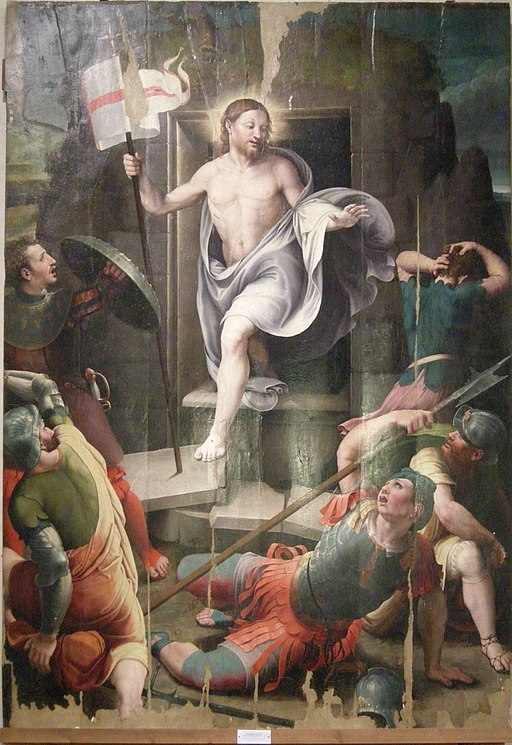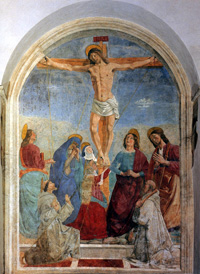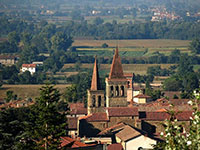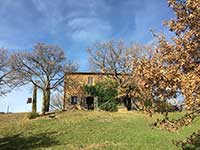The Abbey of Sansepolcro was an Italian Benedictine monastery established in the 11th-century in the town of Sansepolcro in Tuscany, which soon became a Camaldolese monastery.
History
According to tradition, the foundations of the abbey dates to the 9th century, when two natives of the region who had been pilgrims in the Holy Land, Arcanus and Giles, returned and settled on the site. There they built a chapel dedicated to Saint Leonard--whose ruins now lie underneath the current Cathedral of Sansepolcro--where they established a monastic way of life. They had brought a stone from the Church of the Holy Sepulcher in Jerusalem (thus, San Sepolcro) with them from that shrine, leading it to become a popular pilgrimage site.[1]
The first historical mention of a Benedictine monastery, dedicated to the Holy Sepulcher and the Four Evangelists, is documented as of 1012. The monastery was declared an abbey nullius. A commune began to develop around the abbey due to its being declared a market town in 1038 by the Emperor Conrad II.[2] During the following century, the monastery, a holder of numerous properties around central Italy in its own right, elected to be incorporated into the Camaldolese Order, based in the region. The monastic chapter soon tore down the original chapel and built a large Romanesque-style church, dedicated to St. John the Evangelist (the patron saint of the city) to serve its spiritual needs.
In 1520, the monastic community was suppressed and the abbey nullius was promoted by the Holy See to the rank of a regular diocese, for which the abbey church was declared the cathedral. The first bishop appointed to lead the diocese was the last abbot of the abbey, Galeotto Graziani, O.Cam.[3] The episcopal palace for the diocese stands on the site of the former monastery and its cloister still has 15th-century frescoes depicting the life of St. Benedict, as well as the tomb of the artist Piero della Francesca, a native of the city.
Piero della Francesca worked in the church from 1473 to 1474. He was buried in the monastic chapel, the Cappella di San Leonardo or Cappella Monacato.
Piero della Francesca died at the age of eighty-six on October 12, 1492, the day Columbus discovered America.
